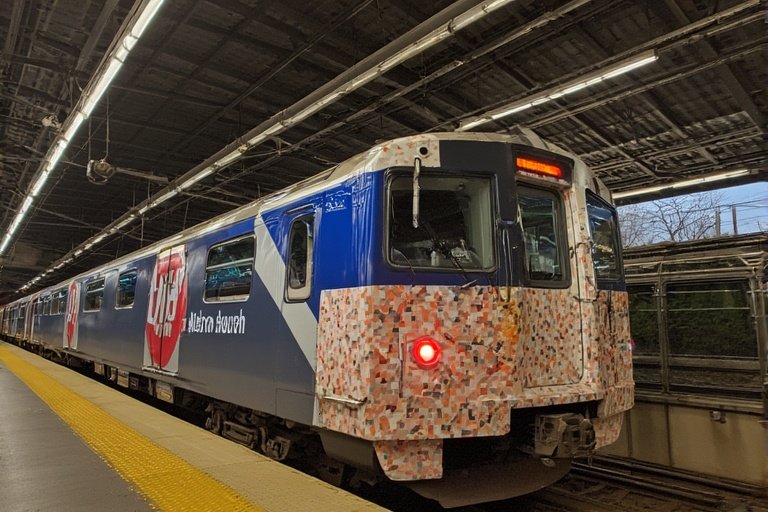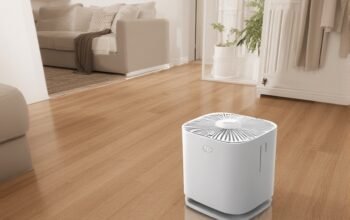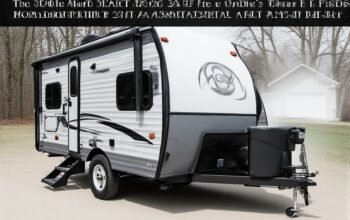
The Metro-North Railroad, a vital lifeline for commuters in New York and Connecticut, is embracing a groundbreaking initiative to enhance its operations and environmental footprint. The Metro North M7A EMU battery retrofit project represents a significant step toward sustainable rail travel, modernizing the existing fleet of M7A electric multiple units (EMUs) to operate on battery power in non-electrified zones. This innovative approach aims to reduce emissions, improve service reliability, and extend the reach of Metro-North’s services without the need for costly infrastructure upgrades. In this article, we’ll explore the details of the Metro North M7A EMU battery retrofit, its benefits, challenges, and its potential to reshape commuter rail systems.
- Understanding the Metro North M7A EMU
- Why the Metro North M7A EMU Battery Retrofit?
- How the Metro North M7A EMU Battery Retrofit Works
- Benefits of the Metro North M7A EMU Battery Retrofit
- Challenges and Considerations
- Metro-North’s Collaboration with LIRR and Alstom
- The Future of Metro North M7A EMU Battery Retrofit
- Conclusion
- FAQs
Understanding the Metro North M7A EMU
The M7A is a variant of the M7 railcar, a stainless steel electric multiple unit built by Bombardier Transportation for Metro-North Railroad and the Long Island Rail Road (LIRR). Introduced in 2004, the Metro North M7A EMU is designed for Metro-North’s under-running third rail system, distinguishing it from the LIRR’s over-running third rail M7 model. With a sleek design, a maximum speed of 100 mph (161 km/h), and a capacity of up to 110 seats per car, the M7A has been a workhorse on routes like the Harlem Line, Hudson Line, and New Haven Line. However, many of Metro-North’s routes, particularly in more rural areas, lack electrified tracks, limiting the M7A’s operational flexibility.
The Metro North M7A EMU battery retrofit seeks to address this limitation by equipping these railcars with battery systems, allowing them to operate in non-electrified territories. This initiative draws inspiration from similar efforts, such as the Long Island Rail Road’s collaboration with Alstom to retrofit M7 railcars for battery operation, which Metro-North is closely monitoring for insights.
Why the Metro North M7A EMU Battery Retrofit?
The Metro North M7A EMU battery retrofit is driven by several key factors:
- Environmental Sustainability: Rail transport is already one of the most eco-friendly modes of travel, but diesel-powered trains still contribute to greenhouse gas emissions. By retrofitting M7A EMUs with batteries, Metro-North aims to reduce its carbon footprint, aligning with New York State’s aggressive climate goals, including a 40% reduction in greenhouse gas emissions by 2030.
- Expanding Service Reach: Many Metro-North branches, such as portions of the Danbury Branch or areas north of Croton-Harmon, rely on diesel locomotives due to the absence of third rail infrastructure. The Metro North M7A EMU battery retrofit enables these railcars to serve non-electrified routes, offering passengers a seamless, single-seat ride without transfers.
- Cost Efficiency: Electrifying entire rail lines is a costly and time-consuming process, requiring extensive infrastructure upgrades. The Metro North M7A EMU battery retrofit provides a more economical alternative, leveraging existing railcars to extend service without the need for new tracks or overhead catenary systems.
- Improved Passenger Experience: Battery-powered M7A EMUs promise quieter, smoother rides compared to diesel trains, enhancing comfort for commuters. Additionally, the retrofit ensures that modern amenities, such as ADA-compliant restrooms and updated interiors, remain available on these routes.
How the Metro North M7A EMU Battery Retrofit Works
The Metro North M7A EMU battery retrofit involves equipping existing M7A railcars with advanced lithium-ion battery packs, controllers, and charging systems. These batteries allow the trains to operate without third rail power for significant distances, drawing energy during stops at electrified stations or terminals. Key aspects of the retrofit include:
- Battery Technology: The retrofit uses high-capacity lithium-ion batteries, designed to provide sufficient power for trips on non-electrified routes. These batteries are lightweight yet robust, ensuring they do not significantly increase the weight of the M7A railcars, which already weigh approximately 128,300 pounds per car.
- Charging Infrastructure: To support the Metro North M7A EMU battery retrofit, short sections of third rail may be installed at key terminals, such as Oyster Bay or Danbury, to recharge batteries during layovers. Additionally, the trains can recharge on the fly using existing third rail segments in electrified zones.
- Operational Range: The retrofitted M7A EMUs are expected to operate for distances of up to 40-60 miles on battery power, sufficient for many of Metro-North’s non-electrified branches. The exact range depends on factors like train weight, passenger load, and terrain.
- Safety Considerations: Safety is a priority in the Metro North M7A EMU battery retrofit. Lithium-ion batteries require careful management to prevent overheating or fire risks. Metro-North is working with industry leaders like Alstom to ensure robust safety protocols, including advanced battery management systems and rigorous testing.
Benefits of the Metro North M7A EMU Battery Retrofit
The Metro North M7A EMU battery retrofit offers numerous advantages for both Metro-North and its passengers:
- Environmental Impact: By replacing diesel trains with battery-powered M7A EMUs, Metro-North can significantly reduce emissions, contributing to cleaner air and a healthier environment.
- Operational Flexibility: The retrofit allows Metro-North to deploy M7A EMUs on routes previously limited to diesel trains, such as the Danbury Branch or Upper Hudson Line, improving service frequency and reliability.
- Cost Savings: Retrofitting existing M7A railcars is far less expensive than purchasing new trains or electrifying entire lines, making the Metro North M7A EMU battery retrofit a cost-effective solution.
- Enhanced Reliability: Battery-powered trains are less prone to mechanical issues associated with diesel engines, potentially reducing maintenance costs and service disruptions.
- Passenger Comfort: The Metro North M7A EMU battery retrofit ensures that passengers enjoy the modern amenities of the M7A, including spacious seating, climate control, and accessibility features, even on non-electrified routes.
Challenges and Considerations
While the Metro North M7A EMU battery retrofit holds immense promise, it also faces several challenges:
- Battery Weight and Space: Adding battery packs to M7A railcars, which are already heavy, could impact performance. Engineers must carefully balance battery capacity with the train’s weight and space constraints.
- Charging Infrastructure: While the retrofit minimizes the need for extensive electrification, some charging infrastructure, such as third rail segments at terminals, will still be required. Determining optimal charging locations and ensuring rapid charging capabilities are critical.
- Battery Recycling: Lithium-ion batteries pose environmental challenges at the end of their lifecycle. Metro-North must develop a robust plan for recycling and disposing of batteries to minimize ecological impact.
- Testing and Implementation: The Metro North M7A EMU battery retrofit is still in the exploratory phase, with Metro-North collaborating with the LIRR to study feasibility. Extensive testing will be needed to ensure reliability and safety before full deployment.
Metro-North’s Collaboration with LIRR and Alstom
The Metro North M7A EMU battery retrofit is closely tied to a similar initiative by the Long Island Rail Road, which is retrofitting M7 railcars with battery systems for service on non-electrified branches like Oyster Bay and Port Jefferson. Metro-North is sharing program details with LIRR, with Catherine Rinaldi, president of Metro-North Railroad, expressing enthusiasm for the technology’s potential. Alstom, a global leader in rail technology, is leading the retrofit efforts, bringing expertise in battery-electric multiple units (BEMUs). The first retrofitted M7 pairs are expected to enter testing in 2022, with Metro-North likely to follow suit if the trials prove successful.
The Future of Metro North M7A EMU Battery Retrofit
The Metro North M7A EMU battery retrofit represents a pivotal moment in the evolution of commuter rail. If successful, it could serve as a model for other rail operators across the United States and beyond. By extending the reach of electric trains without the need for costly electrification, Metro-North can enhance service while reducing its environmental impact. The retrofit also aligns with broader trends in the rail industry, where battery-electric and hybrid trains are gaining traction as sustainable alternatives to diesel.
In the coming years, the Metro North M7A EMU battery retrofit could pave the way for a fully electrified future, with battery-powered trains serving as a bridge until full electrification becomes feasible. This initiative underscores Metro-North’s commitment to innovation, sustainability, and passenger satisfaction.
Conclusion
The Metro North M7A EMU battery retrofit is a bold and forward-thinking initiative that promises to transform commuter rail in the New York metropolitan area. By retrofitting existing M7A railcars with battery systems, Metro-North is taking a pragmatic approach to reducing emissions, expanding service, and improving passenger experiences. While challenges like battery weight, charging infrastructure, and recycling remain, the collaboration with LIRR and Alstom provides a strong foundation for success. As the Metro North M7A EMU battery retrofit moves from concept to reality, it has the potential to set a new standard for sustainable rail travel, making Metro-North a leader in the green transportation revolution.
FAQs
Q: What is the Metro North M7A EMU battery retrofit?
A: The Metro North M7A EMU battery retrofit involves equipping Metro-North’s M7A railcars with lithium-ion batteries to operate on non-electrified tracks, reducing reliance on diesel trains and improving sustainability.
Q: Why is Metro-North pursuing the M7A EMU battery retrofit?
A: The retrofit aims to reduce emissions, extend service to non-electrified routes, lower infrastructure costs, and enhance passenger comfort with modern, battery-powered trains.
Q: How will the batteries be charged in the Metro North M7A EMU battery retrofit?
A: Batteries can be charged using existing third rail segments in electrified zones or short third rail sections at terminals, ensuring efficient recharging during layovers or stops.
Q: What are the challenges of the Metro North M7A EMU battery retrofit?
A: Key challenges include managing battery weight, developing charging infrastructure, ensuring safety, and creating a plan for battery recycling.
Q: When will the Metro North M7A EMU battery retrofit be implemented?
A: The project is in the feasibility and testing phase, with insights from LIRR’s similar retrofit guiding Metro-North. Full implementation timelines are still under development.
Q: How does the Metro North M7A EMU battery retrofit benefit passengers?
A: Passengers will enjoy quieter, smoother rides, modern amenities, and seamless service on non-electrified routes, improving the overall commuting experience.


